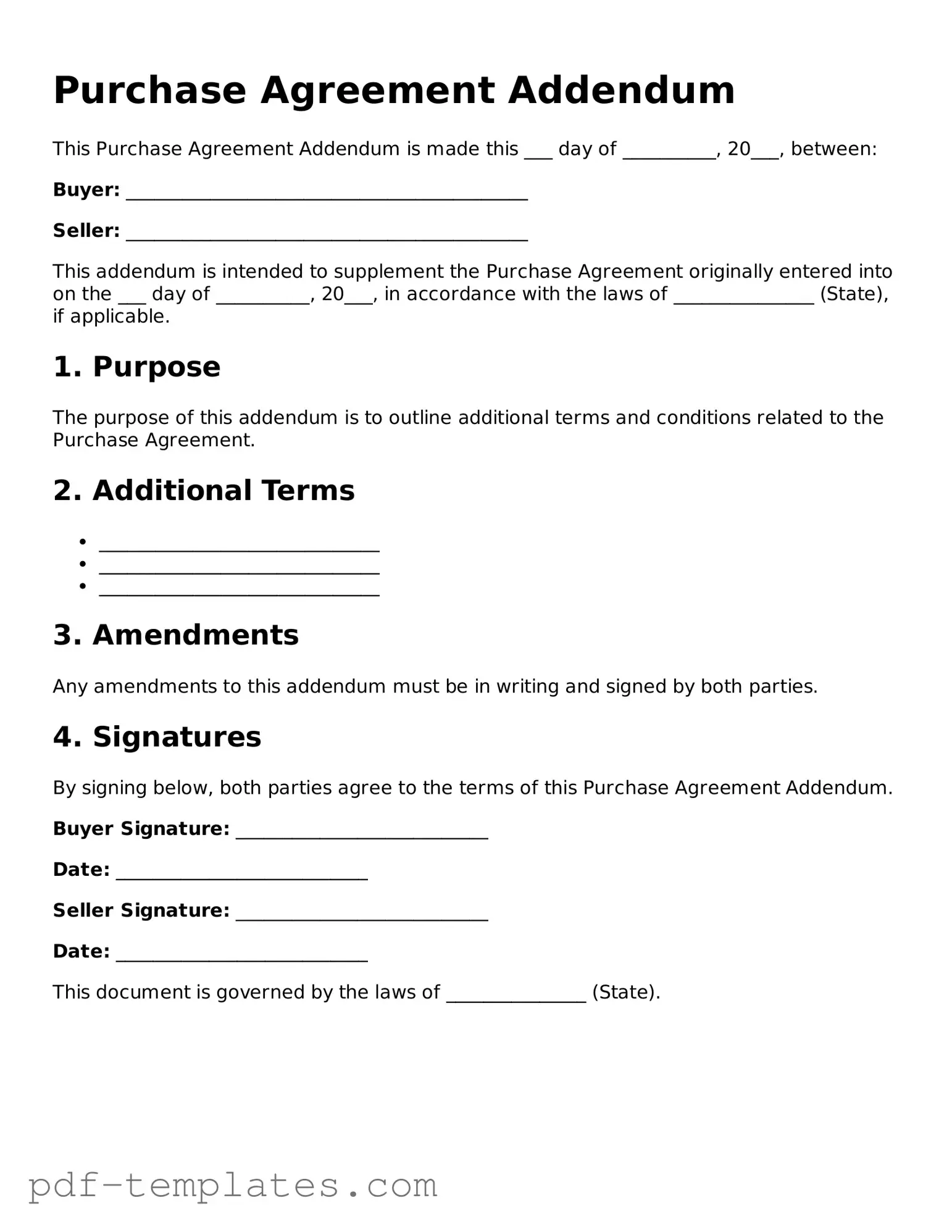The Purchase Agreement Addendum is similar to the Sales Agreement, as both documents outline the terms and conditions of a transaction between a buyer and a seller. The Sales Agreement serves as the primary contract, detailing the specifics of the sale, including price, payment terms, and delivery conditions. An addendum can modify or add to this agreement, allowing parties to adjust terms without drafting a completely new contract. This flexibility helps address changes in circumstances or negotiations that arise after the initial agreement is signed.
When dealing with the sale or purchase of recreational vehicles, it is essential to also consider the Texas RV Bill of Sale. This important document, which is necessary to formalize the transaction, ensures that both parties are clear on the terms of the sale. For detailed information on how to properly complete this document, refer to documentonline.org/blank-texas-rv-bill-of-sale/.
Another document akin to the Purchase Agreement Addendum is the Lease Agreement Addendum. This addendum is used in rental situations to modify existing lease terms. It might include changes such as adjustments in rent, duration of the lease, or rules regarding pets. Just like a purchase addendum, it allows landlords and tenants to make necessary updates while keeping the original lease intact, ensuring clarity and mutual understanding between both parties.
The Memorandum of Understanding (MOU) shares similarities with the Purchase Agreement Addendum as well. An MOU outlines the intentions and expectations of parties before a formal contract is created. While it is not legally binding, it sets the stage for future agreements. An addendum can then formalize these intentions by incorporating them into a legally binding purchase agreement, ensuring that all parties are on the same page regarding their commitments.
Lastly, the Amendment to Contract is another document that parallels the Purchase Agreement Addendum. An amendment specifically changes or adds provisions to an existing contract. This document is often used when one party needs to change a specific term, such as the delivery date or payment schedule. The amendment process is similar to that of an addendum, as both allow for adjustments to existing agreements while maintaining the original contract's integrity.
